The content of the article
Greasy stains on clothes - this is something that at least once in our lives each of us has come across, it does not matter, man or woman. And this is a very unpleasant, noticeable and difficult to solve problem, because the oil quickly and firmly eats into the fabric. Over time, a speck, even the smallest, begins to adhere to dust and threatens to grow to a larger scale, therefore it must be removed as soon as possible.
Causes of oil stains
Oil stains lurk us everywhere. They can be caused by a piece of fatty meat that has fallen on the shirt, spilled sauce, a passing hit of oil from a sizzling frying pan, and touching your clothes with your dirty hands - there can be many risk factors. Girls often face the fact that they touch the lips painted with gloss on the sleeve of their favorite blouse. But the male sex has to spend a significant part of the time with the car, and not always in case of breakdown, when it is necessary to climb under the carburetor, replaceable clothes are lying around in the trunk.
So, the spots can be very tiny, such as from a drop of oil that has fallen from the pan, or extend to half a snow-white tablecloth, which cannot be looked at without a tear after a feast. For any oil stains, you can use one approach, the difference is only in the number of efforts made, as well as the funds spent.
Initial stain treatment and preparation for removal
You should not buy the first stain remover that comes across and immediately apply it with a generous layer on damaged clothes. It is likely that the product will not help at best, and at worst it will irreparably ruin the thing, since “thermonuclear” chemical compounds can burn through polyester, silk, nylon and some other especially sensitive fabrics.
Pre-clean the surface on which the stain has settled, from dust - just wipe it with a dry brush of medium hardness, and if necessary, moisten it and rub a little more. Do not distribute the oil mark with water or rub it with powder.
Next, find a clean cloth, a piece of cloth, a cotton swab, or a soft brush, which you will use to apply the cleaning agent and remove the stain. If you use a stain remover or other special-purpose product, dilute it in accordance with the instructions, having prepared the required amount of solution. Use a glass or ceramic container for this and in no case mix directly on the affected tissue. After all preparations, try the action of the solution on a spare piece of the same material or, if there is none, on a small area of the inner seam. In the second case, it is better to turn the thing inside out and apply a weak solution to the side seam, since there they are usually the most dense and do not adhere to the main fabric. If after some time the material does not deteriorate, feel free to proceed to remove the stain.
In order for the tool to be more effective, and the greasy trace disappeared faster and easier, take note of a few simple tips:
- Always apply the solution, whether it’s a folk remedy or a special chemical substance, on the inside of the fabric - so you will not only protect the front side of your thing, but also accelerate the process of the disappearance of the oil trace.
- Before processing, lay the item so that the spot is directly on top of a white cloth, preferably dense or folded several times, or a white paper towel that will absorb greasy residues.
- During processing, the stain may “become capricious” and begin to spread with the solution that you tried to remove; therefore, start to apply the product around the edges - carefully treat the contour of the oil trace and carefully move to the middle, thus making circles inside the stain.
Folk remedies for removing oil stains
Since this problem appeared in people many years ago, numerous generations of housewives who were not yet familiar with stain removers, or those who could not afford expensive chemicals, came up with their own ways to deal with greasy stains on clothes.
And the first remedy that is most often resorted to is household soap. A brown or white bar with a specific smell should certainly be stored in a cabinet in each house, since it has a range of very broad actions. To use it as a stain remover (notice, sometimes more effective than solutions in colored jars), it is enough to gently rub an oil trace with soap and water soaked in water and leave the thing overnight, and wash it in the morning. Not even memories will remain of the spot.
Another recipe is also associated with laundry soap, but its action is much faster, so to speak, the express method. Rub the stain and pour a little sugar on top, directly on top of the soap. You do not have to wait long, after a quarter hour of interaction of these two components, fat will disappear without a trace.
Salt is the second most popular stain control method. Moreover, not only bold. Sprinkle the salt on top of the cloth, rub it, and when it is completely absorbed, repeat the process. And so on until the spot disappears completely. Wash the item at the end.
Liquid ammonia also helps with stains of almost any kind - from ink to gasoline and lubricants. But at the same time, during the processing of natural tissues, you must act very carefully or completely abandon this tool. For artificial ones, dilute a teaspoon of alcohol in half a liter of water, moisten a cotton swab or a clean cloth, treat the area, and then cover it with a piece of cotton cloth and iron.
Common salt and liquid ammonia can remove not only fresh, but also old oil traces.
If you put a stain on a light cloth or delicate matter, which can easily deteriorate under the influence of "chemistry", use ordinary chalk. To do this, you need to crush it into powder and sprinkle on the soiled area. After a couple of hours, remove the chalk crumbs and wash the clothes.
Tooth powder and ordinary talcum powder, which is used for children, also have a delicate effect. But, unlike the previous method, this powder, scattered on top of the fabric, should be covered with a “blotter” (you can use tracing paper) and ironed with a gentle mode. Press down on top of the paper and leave it under heavy weight overnight.
Blotting paper can be used as an independent tool. Place the fabric between two sheets of blotter and iron. After that, you don’t even have to wash your clothes, as the paper absorbs all the fat. But just for a large spot, use several sheets, changing them in time, so that the opposite effect does not turn out.
Dishwashing liquid is suitable for removing grease not only from ceramic and glass surfaces. Rub a little washing liquid into the stain, wait a few minutes, then treat the stained area with hot water, preferably boiling water, and wash.
So, if you put an oil stain on clothes or tablecloths - this is not a reason to throw away a thing. Try these methods, and you will surely get rid of a greasy trace on the fabric.
Video: how to remove a stain from sunflower oil from clothes

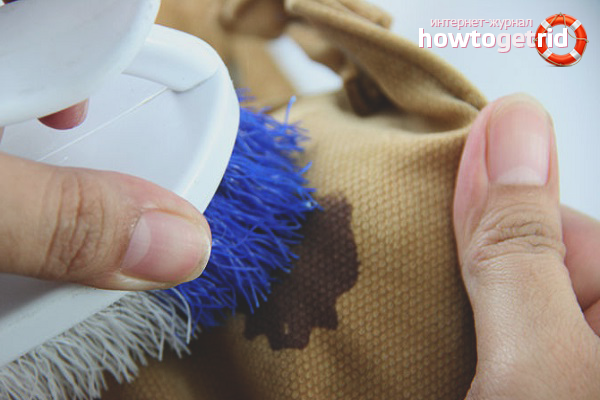
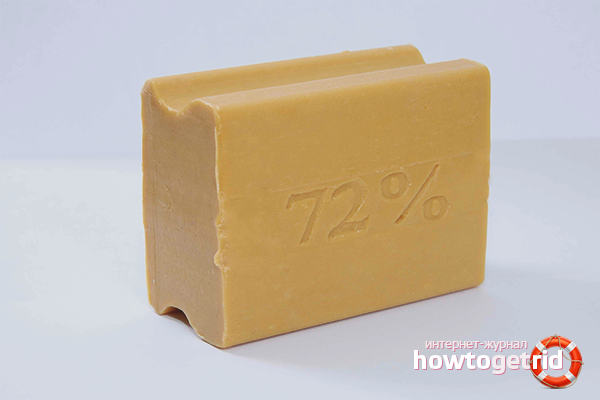
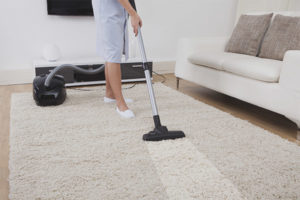

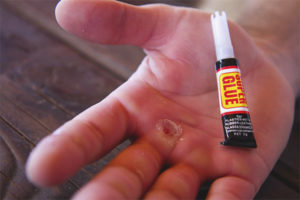

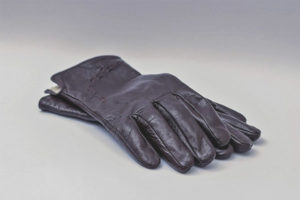


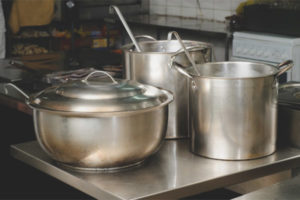
Submit